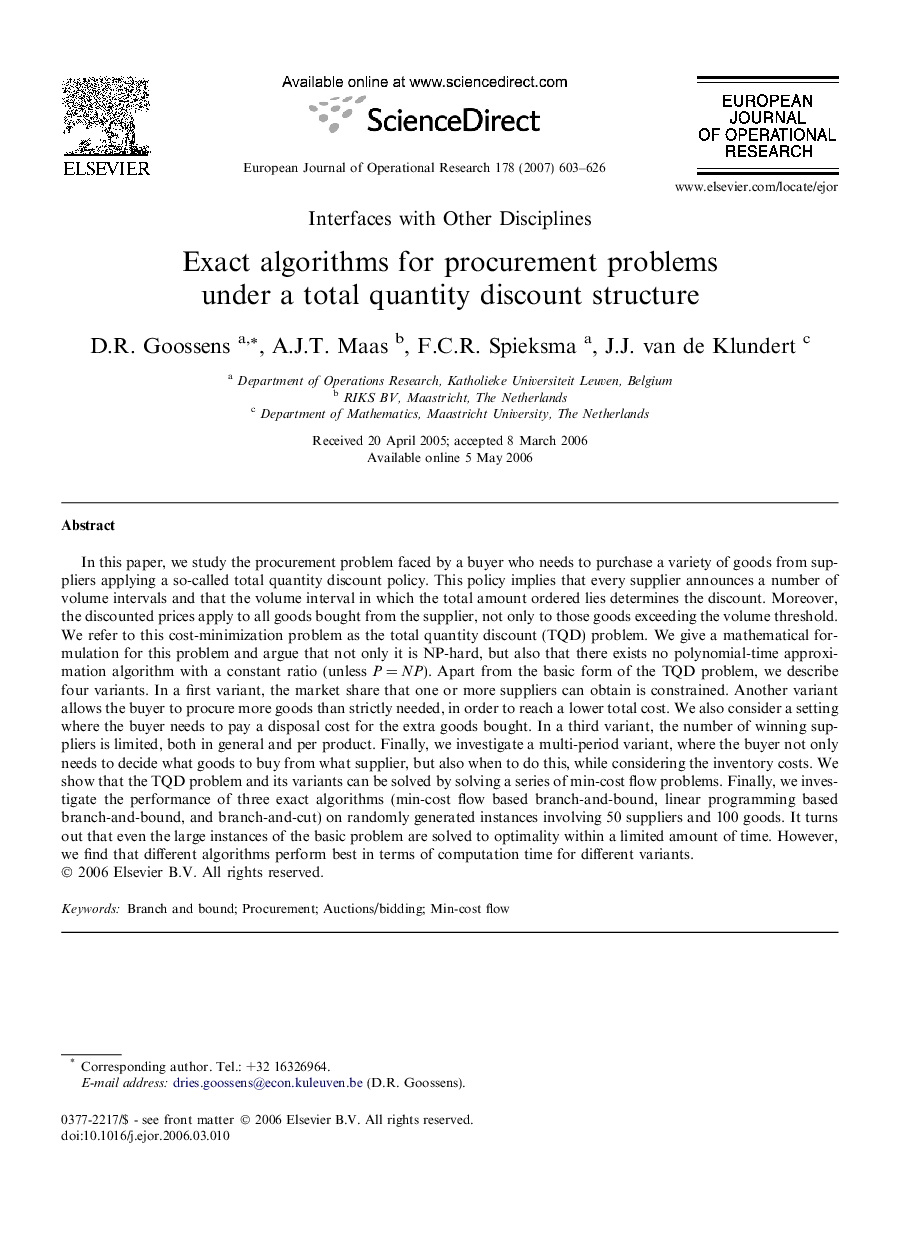| کد مقاله | کد نشریه | سال انتشار | مقاله انگلیسی | نسخه تمام متن |
|---|---|---|---|---|
| 479183 | 1446202 | 2007 | 24 صفحه PDF | دانلود رایگان |

In this paper, we study the procurement problem faced by a buyer who needs to purchase a variety of goods from suppliers applying a so-called total quantity discount policy. This policy implies that every supplier announces a number of volume intervals and that the volume interval in which the total amount ordered lies determines the discount. Moreover, the discounted prices apply to all goods bought from the supplier, not only to those goods exceeding the volume threshold. We refer to this cost-minimization problem as the total quantity discount (TQD) problem. We give a mathematical formulation for this problem and argue that not only it is NP-hard, but also that there exists no polynomial-time approximation algorithm with a constant ratio (unless P = NP). Apart from the basic form of the TQD problem, we describe four variants. In a first variant, the market share that one or more suppliers can obtain is constrained. Another variant allows the buyer to procure more goods than strictly needed, in order to reach a lower total cost. We also consider a setting where the buyer needs to pay a disposal cost for the extra goods bought. In a third variant, the number of winning suppliers is limited, both in general and per product. Finally, we investigate a multi-period variant, where the buyer not only needs to decide what goods to buy from what supplier, but also when to do this, while considering the inventory costs. We show that the TQD problem and its variants can be solved by solving a series of min-cost flow problems. Finally, we investigate the performance of three exact algorithms (min-cost flow based branch-and-bound, linear programming based branch-and-bound, and branch-and-cut) on randomly generated instances involving 50 suppliers and 100 goods. It turns out that even the large instances of the basic problem are solved to optimality within a limited amount of time. However, we find that different algorithms perform best in terms of computation time for different variants.
Journal: European Journal of Operational Research - Volume 178, Issue 2, 16 April 2007, Pages 603–626